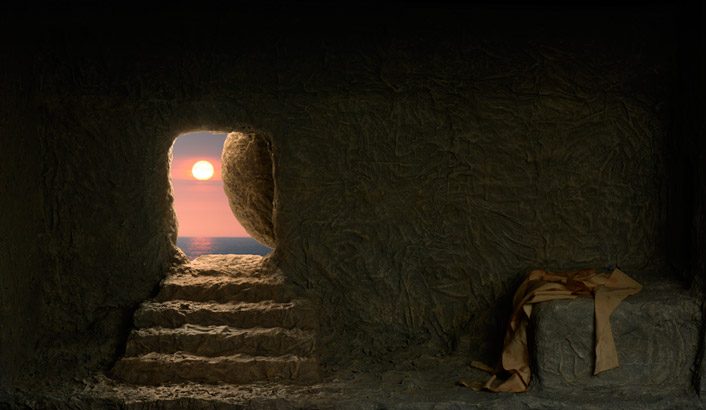Jesus’ handkerchief
Why did Jesus leave the handkerchief folded in the tomb after His resurrection?
The Bible tells us that the handkerchief that was used to cover His head wasn’t left lying next to the linen cloths in the tomb. The Bible dedicates an entire verse explaining how the handkerchief was carefully folded and placed at the head of the stone tomb.
Now on the first day of the week Mary Magdalene went to the tomb early, while it was still dark, and saw that the stone had been taken away from the tomb. Then she ran and came to Simon Peter, and to the other disciple, whom Jesus loved, and said to them, “They have taken away the Lord out of the tomb, and we do not know where they have laid Him.” Peter therefore went out, and the other disciple, and were going to the tomb. So they both ran together, and the other disciple outran Peter and came to the tomb first. And he, stooping down and looking in, saw the linen cloths lying there; yet he did not go in. Then Simon Peter came, following him, and went into the tomb; and he saw the linen cloths lying there, and the handkerchief that had been around His head, not lying with the linen cloths, but folded together in a place by itself. John 20.1-7
Is this important? Definitely
Is it significant? Yes
To understand the significance behind the folded handkerchief, you must have a certain understanding of the Hebrew traditions of that time. The folding of the handkerchief has to do with the relationship between a master and his servant. Every Jewish boy is taught this tradition.
Whenever a servant sets the dinner table for his master, he made sure it was done exactly how his master wanted. After the table was perfectly set, the servant would step out of the room until the master had finished his meal. The servant wouldn’t dare touch the table before his master had finished eating.
Once the master had finished his meal, he would get up, wipe his hands, his mouth and his beard, roll up his handkerchief and placed it on the table. In those days, a rolled up handkerchief meant: “I’m finished.” If the master got up and left the napkin folded beside his plate, the servant knew better than to touch the table because the folded napkin meant, “I’m not finished; I’ll be back!”

 Portuguese
Portuguese
 Spanish
Spanish
 French
French
 Italian
Italian
 Haiti
Haiti
 Russian
Russian


